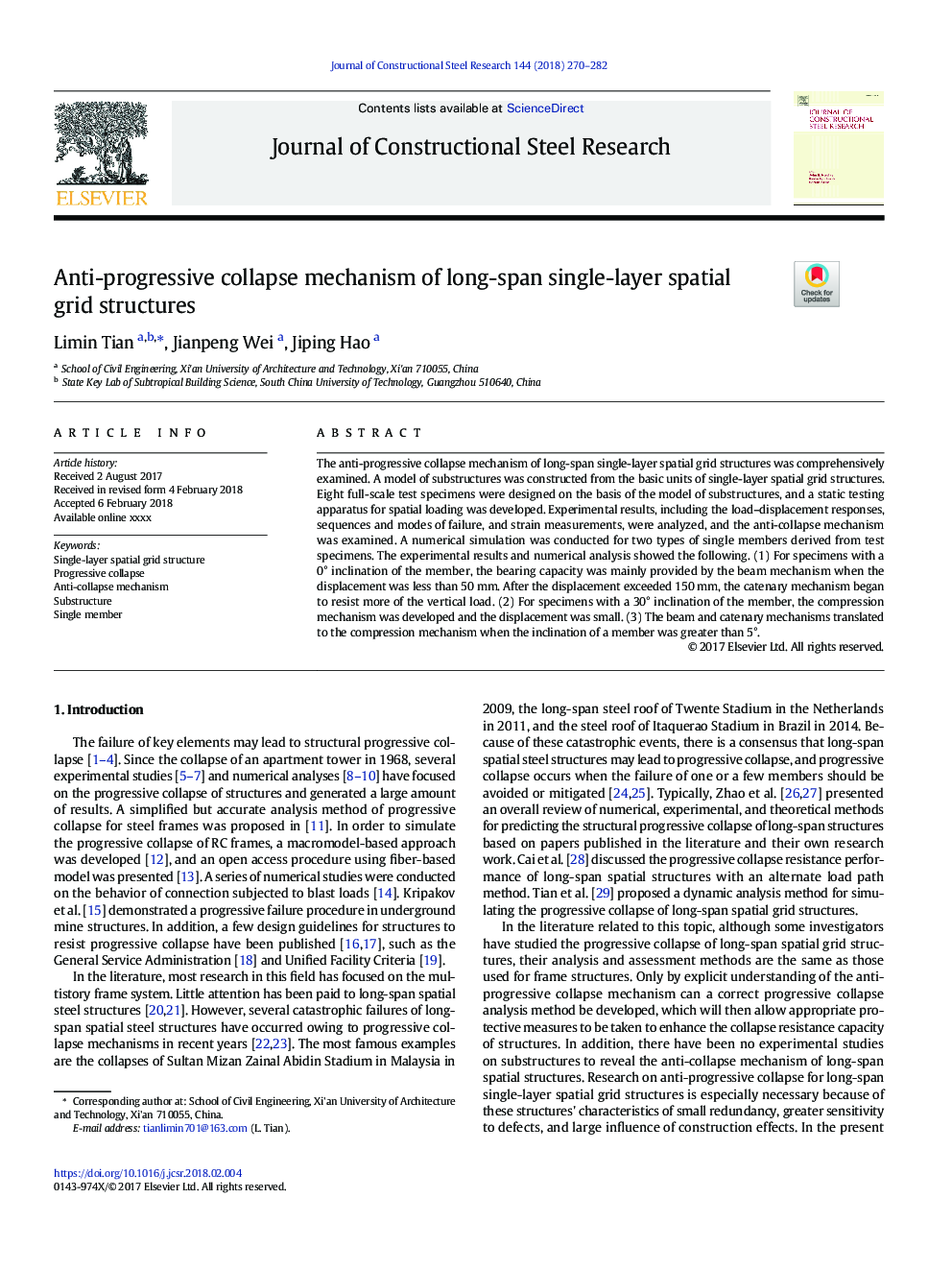| Article ID | Journal | Published Year | Pages | File Type |
|---|---|---|---|---|
| 6750899 | Journal of Constructional Steel Research | 2018 | 13 Pages |
Abstract
The anti-progressive collapse mechanism of long-span single-layer spatial grid structures was comprehensively examined. A model of substructures was constructed from the basic units of single-layer spatial grid structures. Eight full-scale test specimens were designed on the basis of the model of substructures, and a static testing apparatus for spatial loading was developed. Experimental results, including the load-displacement responses, sequences and modes of failure, and strain measurements, were analyzed, and the anti-collapse mechanism was examined. A numerical simulation was conducted for two types of single members derived from test specimens. The experimental results and numerical analysis showed the following. (1) For specimens with a 0° inclination of the member, the bearing capacity was mainly provided by the beam mechanism when the displacement was less than 50â¯mm. After the displacement exceeded 150â¯mm, the catenary mechanism began to resist more of the vertical load. (2) For specimens with a 30° inclination of the member, the compression mechanism was developed and the displacement was small. (3) The beam and catenary mechanisms translated to the compression mechanism when the inclination of a member was greater than 5°.
Keywords
Related Topics
Physical Sciences and Engineering
Engineering
Civil and Structural Engineering
Authors
Limin Tian, Jianpeng Wei, Jiping Hao,
